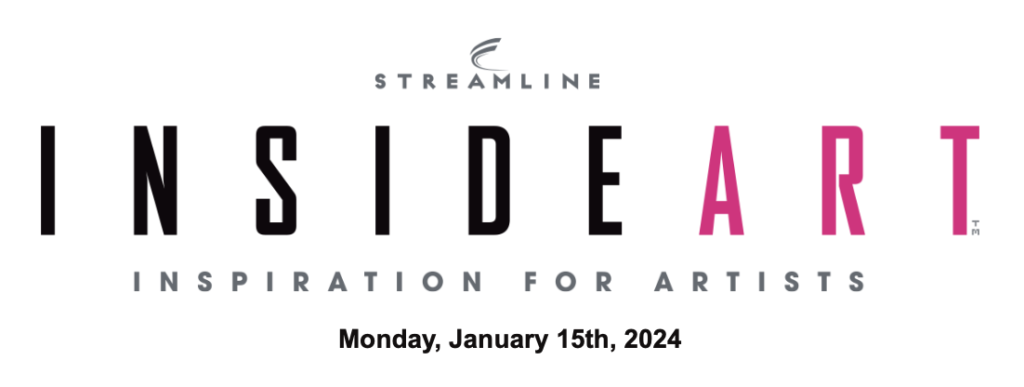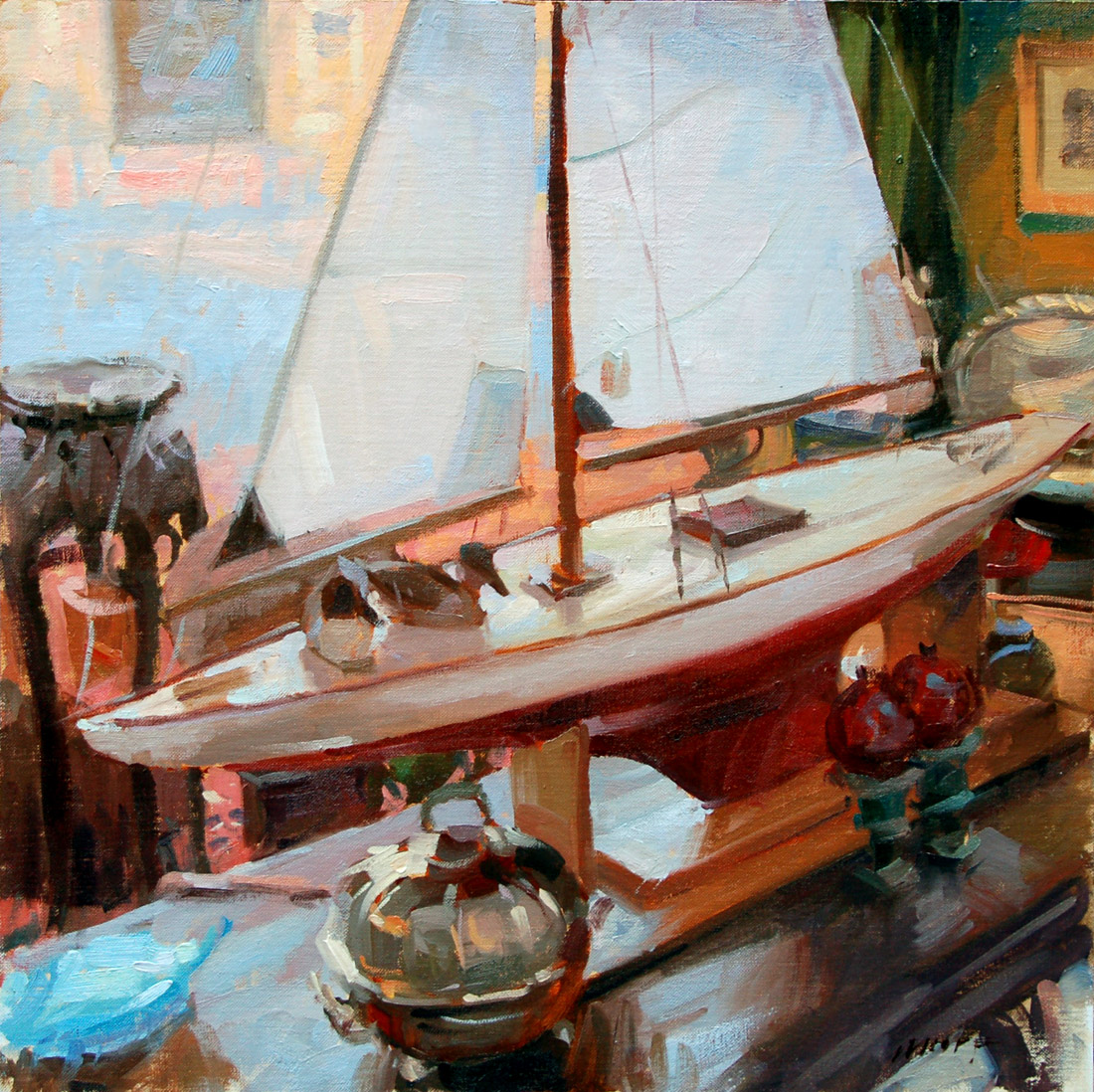
Make It Yours
By Christopher Volpe
Inside Art 1/15/24 Issue
Featured Painting above:
The Long Journey
By Larry Moore
20×20 oil on canvas, sold
Aug 7, 2018
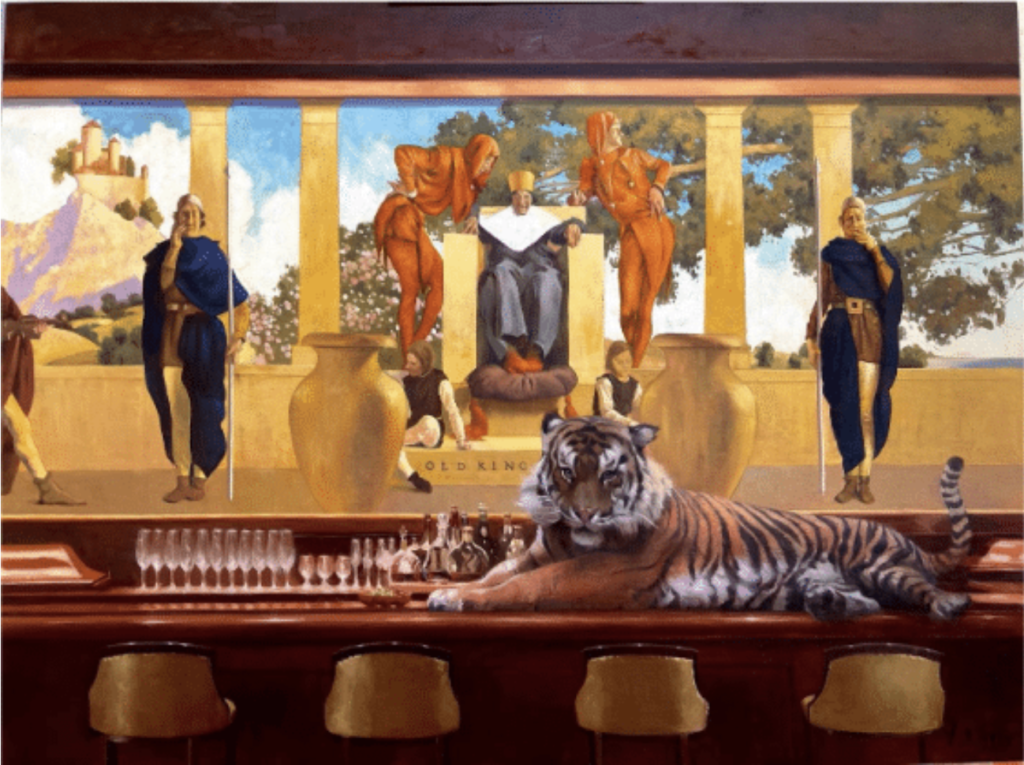
Larry Moore, Tiger King, 36”x48” oil on wood commission. This artist has a new video out in which he helps artists to access the wellsprings of their creative originality. Download Larry Moore’s Creativity Course: Finding Your Unique Painting Language here.
“Tradition is not the worship of ashes, but the preservation of fire.”
― Gustav Mahler
Art has a long history (to say the least) of practice, tradition, and training. And yet, art remains forever fresh and new for each new practitioner. That’s part of its endless appeal in the popular imagination – when someone says, “You’re an artist?” with something like admiration, maybe a touch of awe, they’re imagining what it would be like to trust oneself implicitly, to live fully and authentically, with imagination, beauty, and truth as constant companions (Ha! If they only knew…!).
As an artist, it’s a given that you have to learn the basics of composition, drawing, edges, color, the principles and techniques passed from master to student for hundreds of years. Yet, there’s so much to internalize and develop that often expression, the very thing that drives creativity in the first place, gets left behind. For the creative artist, technique and tradition are tools, not ends in themselves, and both are needed.
Take JMW Turner for example. Turner was an artist so thoroughly a master of the techniques of painting that he was enrolled in the prestigious Royal Academy of Arts while still a boy of 14. Had he kept on producing such paintings, he would probably have been elected to head of the Academy eventually and very few people today would know his name. When Turner put what he’d learned of technique and tradition entirely at the service of a personal understanding of life and beauty, he developed his own “painting language” to do it in. The Academy called him mad. And here we are talking about Turner instead of … who?
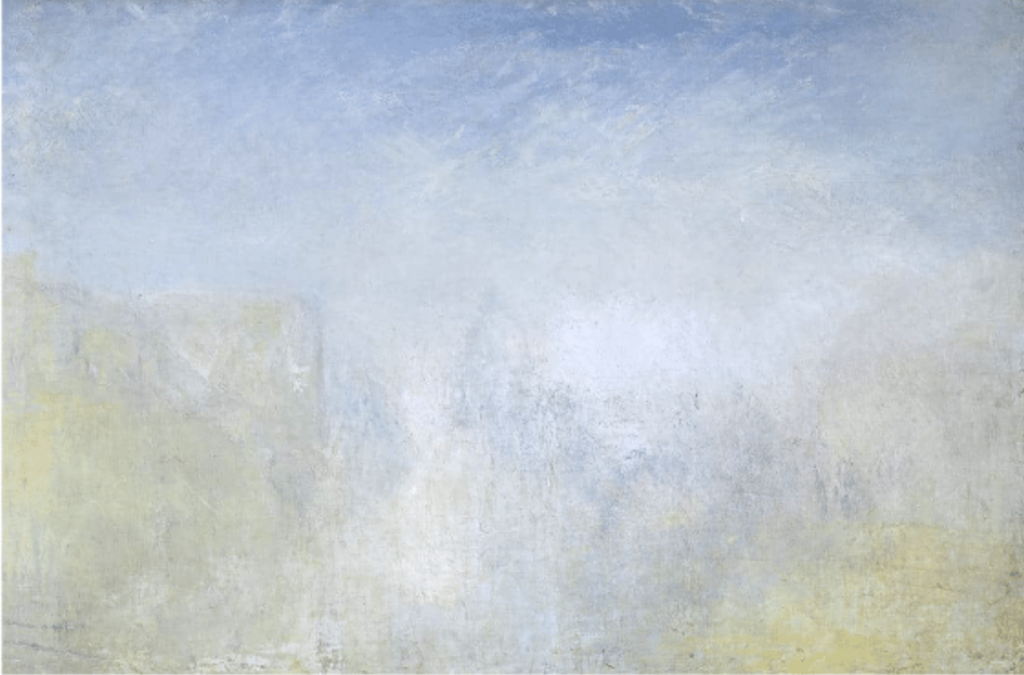
J.M.W. Turner, Venice with the Salute, c.1840-5 Accepted by the nation as part of the Turner Bequest 1856
After all, every standard academic technique was once somebody’s “what if…? A painter’s vision once demanded an expression with enough force that a technique was born and then universally adopted.
Still, somehow we’re supposed to find our authentic voice AND learn the secrets of conjuring three-dimensional forms onto a two-dimensional surface – the stages of building a painting through design and draftsmanship which tools to use and how, etc. etc. It’s a lot!
Therefore, many stick to the well-travelled path, believing that departing yields nothing but disaster; our horror at our failed paintings send us back to what we know will “work.” We conclude that we’re not that kind of artist, or maybesomeday we’ll have the confidence and ability to strike out on our own, but definitely not now – our disastrous attempts prove it. But this is a huge mistake.
The real problem here is not the inability to create something of value – it’s our inability to see what’s of value in what we create.
Seeing Our Own Worth
In other words, we spend so much time and energy developing the proper techniques of making good paintings, that when we step outside those parameters, of course what we create looks like a failure – it doesn’t check any of the boxes we’ve learned are “supposed to be” checked.
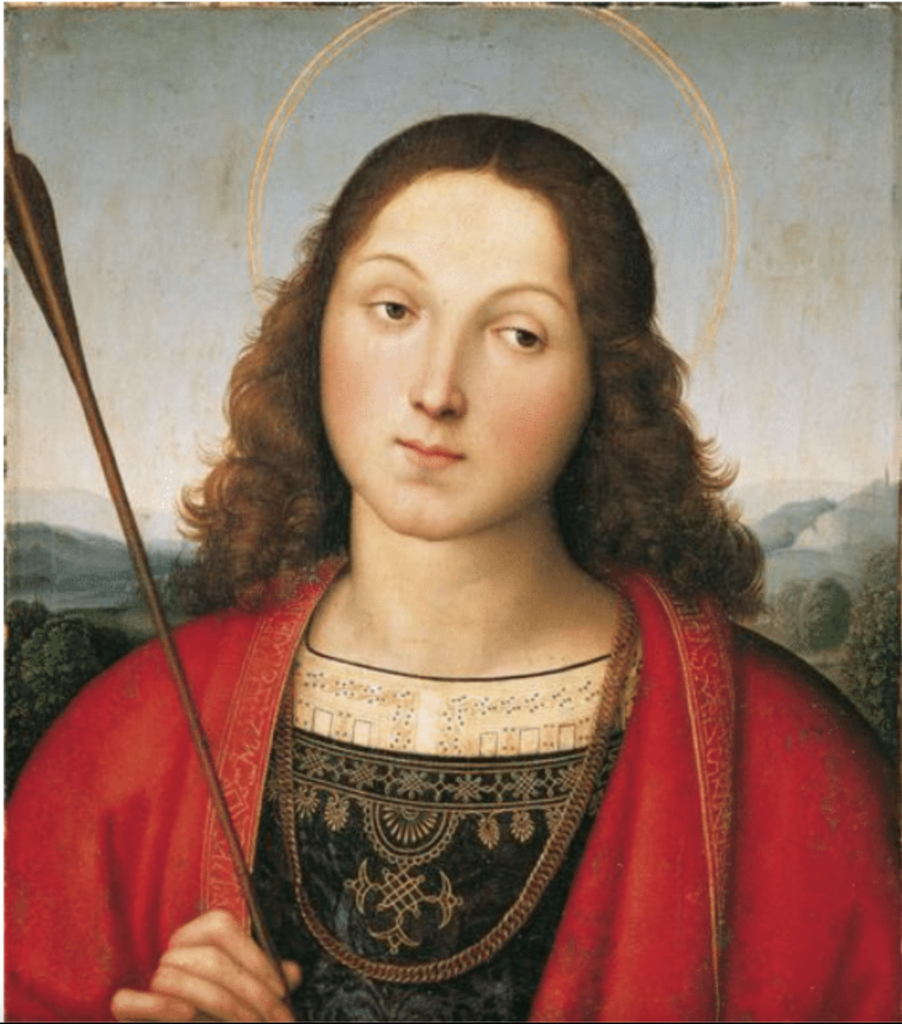
Raphael was very much a painter of his time – the Italian Renaissance
And yet, and you already know this on some level, in each “hot mess” you make, there’s a little of yourself in there. There’s something unlearned, uncontrived, honest, and raw, something that corresponds to how you really feel and who you really are in the world. See that. Honor it.
You don’t have to show those paintings to anyone, but make them, keep them (even if you can barely bring yourself to look at them). Own them for what they are and what they could have been. Often there’s an idea of value there, it’s just that the technique hasn’t caught up yet. In this way, the so-called failures are the flagstones that lead to authenticity.
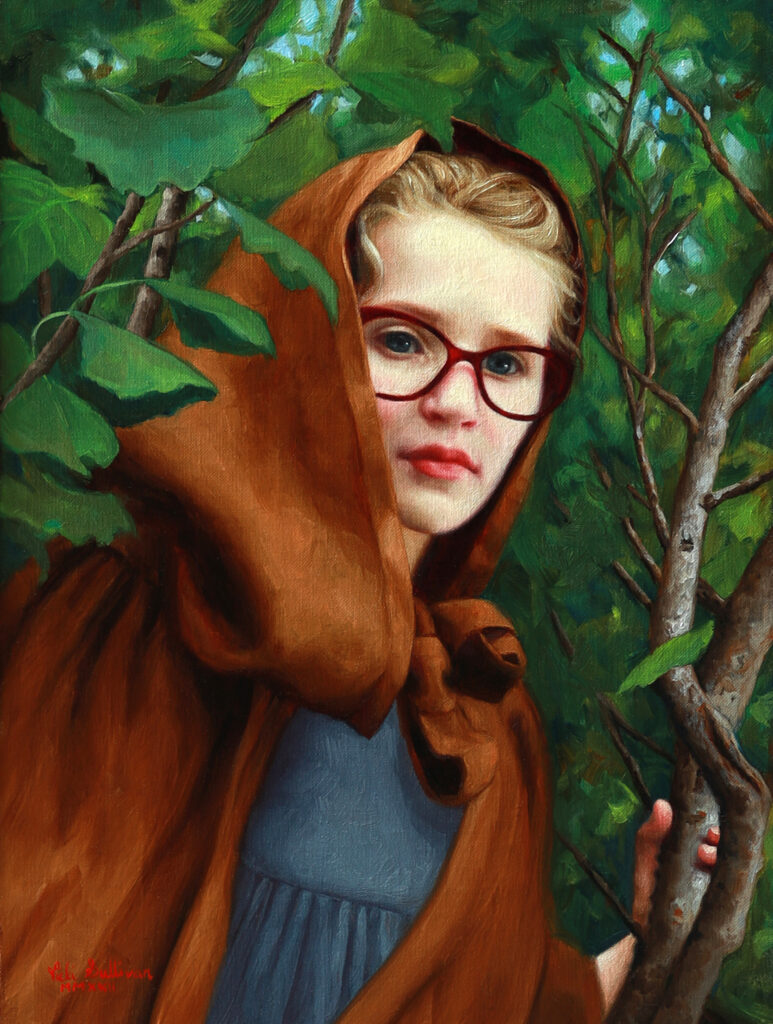
Vicki Sullivan, The World From a Tree, Oil on Linen, 40cm x30cm. Commissioned. Vicky teaches her approach to the portrait in the video, Painting Realistic Portraits.
Eventually, when you can allow your emotion to lead but not dominate, you will begin to combine technique and personal expression in the free interpretation of what you see and know.
Here are three ideas for stretching yourself as you seek beyond your boundaries:
- Find out what artists do. Seek out an historical artist whose work you respond to immensely and learn everything you can about them as a person. The only requirement is that they be dead. Do some deep-dive art history searches. Find the originators of what everyone is copying: find yourself a Sargent, a Turner, a Klee, a Raphael, Constable or Latour. Don’t settle for free YouTube documentaries; splurge on real art books and read the words in them. Find out what the critics, then and now, as well as what the artist had to say about the work. Seriously, go see the work in person whenever you can. Don’t study them to learn how to use oil paint, watercolor, or pastels; the most important lesson the masters can teach you isn’t about technique – it’s about what inspired them to make the work they did.
- Look at different kinds of art. We tend to gravitate to a particular genre of art and the artists who make it, but there are many art worlds. Stumble onto a few of them now and again. Follow some unfamiliar links online, read about art you aren’t even initially interested in, discover new galleries and seriously consider the merit of the work they show. Always be open to expanding your definition of art.
- Figure out what you have to say. Knowing yourself is a huge advantage as an artist. Ask yourself what you like about the work you admire – not just in terms of technique, but in terms of what’s behind it, what the artist put into it, what the work conveys about life! What’s important to you? As Walt Whitman wrote, “the passionate play goes on – and you can contribute a verse.”
Design is probably the most important and most easily assimilated aspect of traditional technique. For a thorough overview, you might want to consider an instructional DVD such as William A. Schneider: Design Secrets of Masters – Key to a Successful Painting
This article is from the January 15, 2024 issue of Inside Art by Streamline Publishing – “helping people reach their full creative potential”
